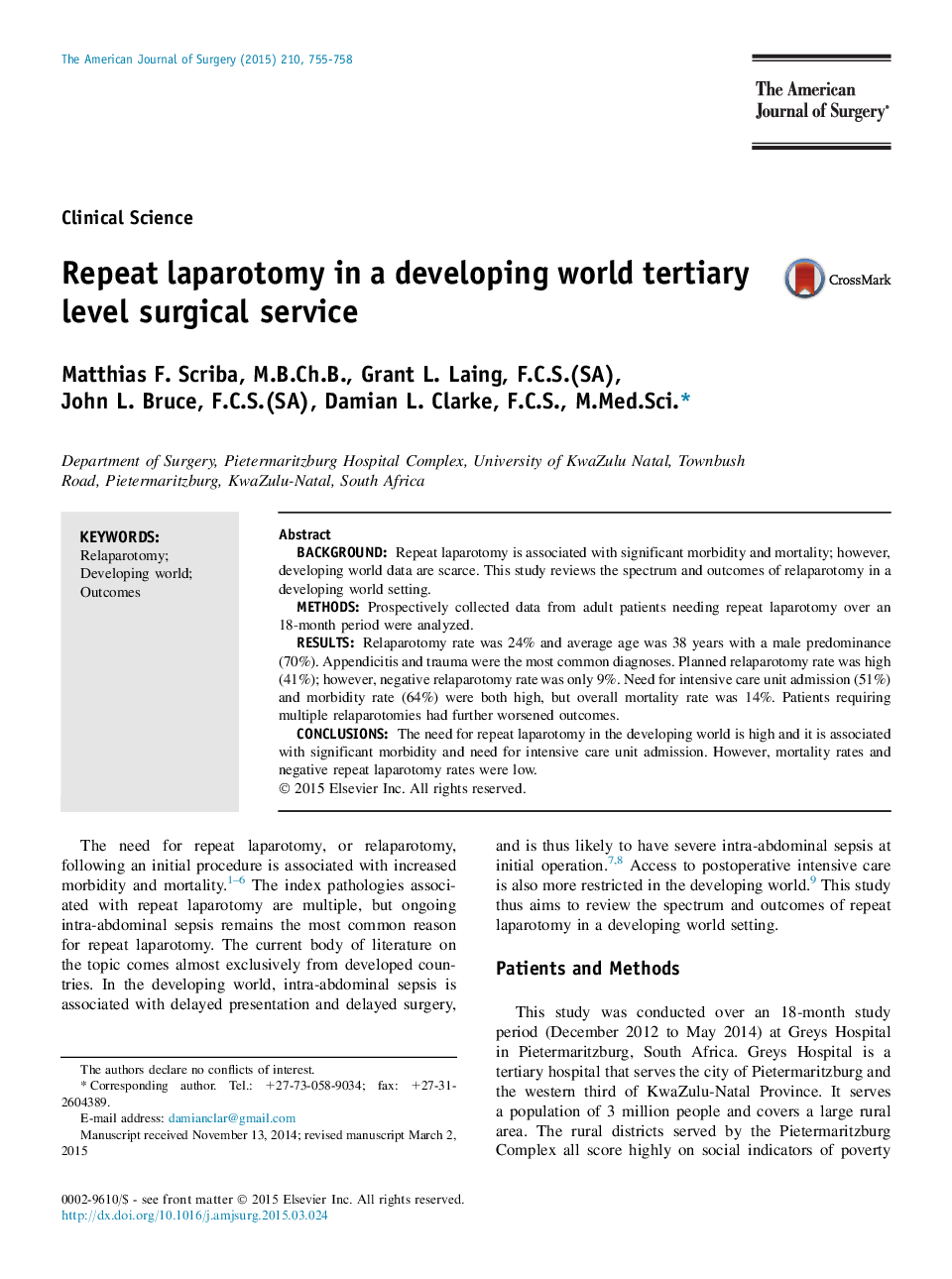| کد مقاله | کد نشریه | سال انتشار | مقاله انگلیسی | نسخه تمام متن |
|---|---|---|---|---|
| 4278335 | 1611490 | 2015 | 4 صفحه PDF | دانلود رایگان |
BackgroundRepeat laparotomy is associated with significant morbidity and mortality; however, developing world data are scarce. This study reviews the spectrum and outcomes of relaparotomy in a developing world setting.MethodsProspectively collected data from adult patients needing repeat laparotomy over an 18-month period were analyzed.ResultsRelaparotomy rate was 24% and average age was 38 years with a male predominance (70%). Appendicitis and trauma were the most common diagnoses. Planned relaparotomy rate was high (41%); however, negative relaparotomy rate was only 9%. Need for intensive care unit admission (51%) and morbidity rate (64%) were both high, but overall mortality rate was 14%. Patients requiring multiple relaparotomies had further worsened outcomes.ConclusionsThe need for repeat laparotomy in the developing world is high and it is associated with significant morbidity and need for intensive care unit admission. However, mortality rates and negative repeat laparotomy rates were low.
Journal: The American Journal of Surgery - Volume 210, Issue 4, October 2015, Pages 755–758
